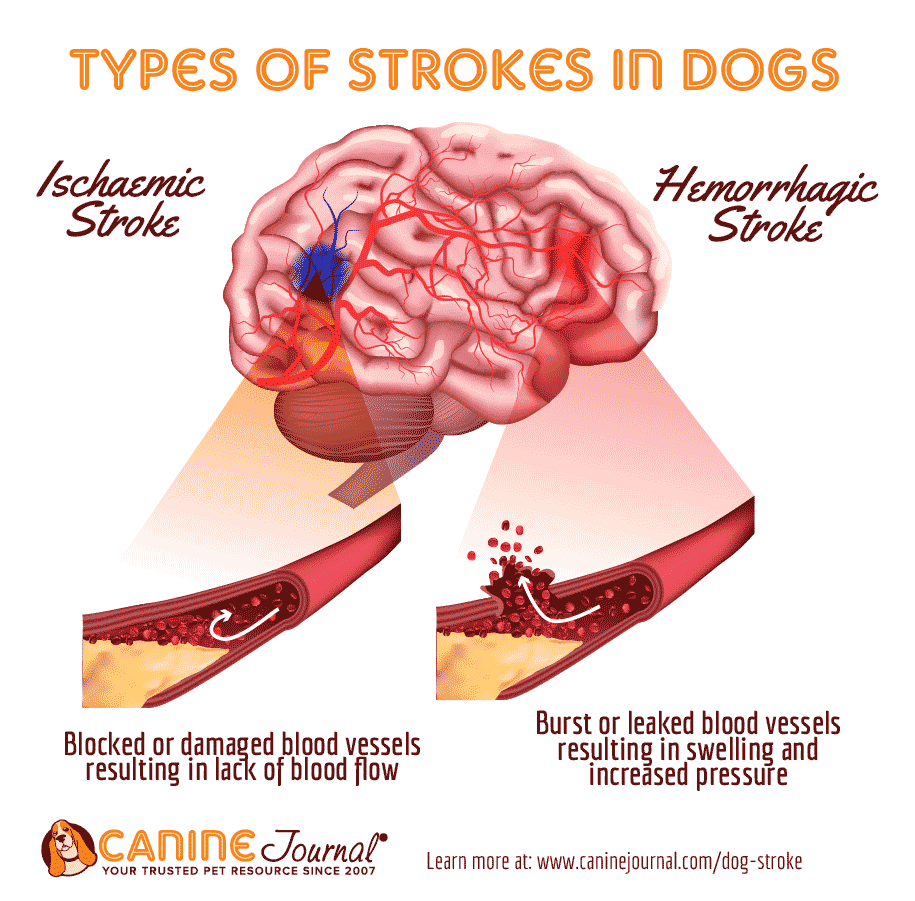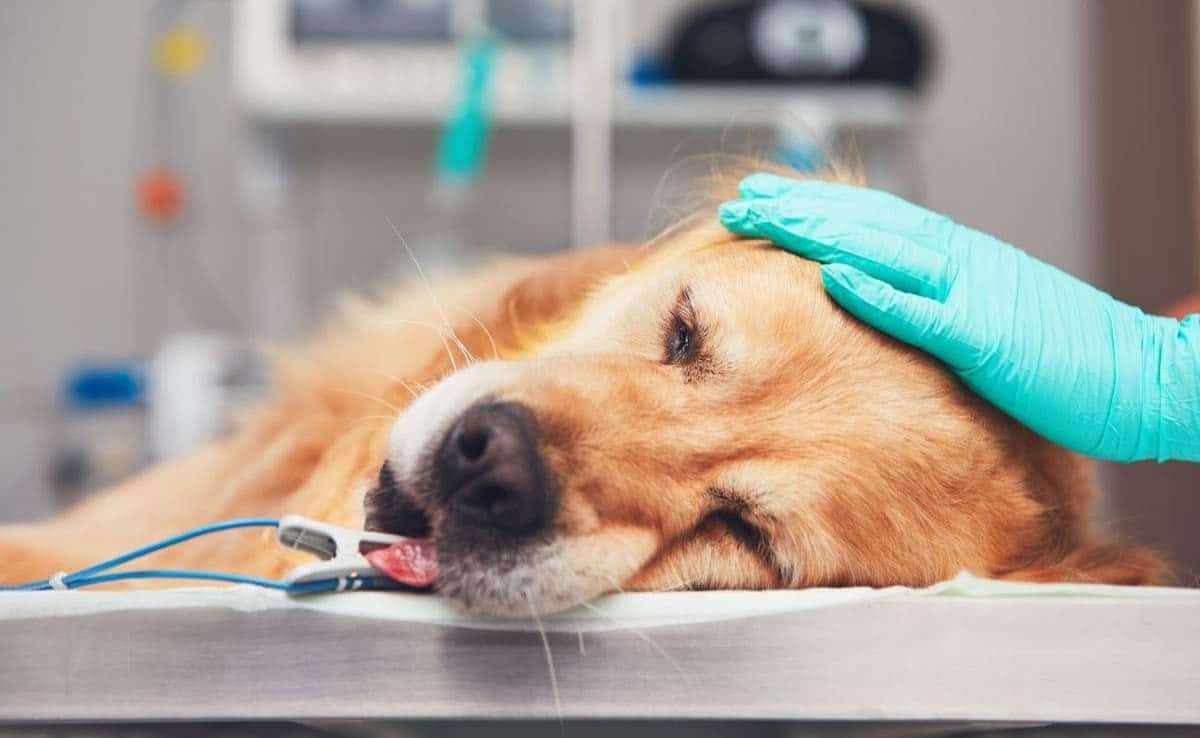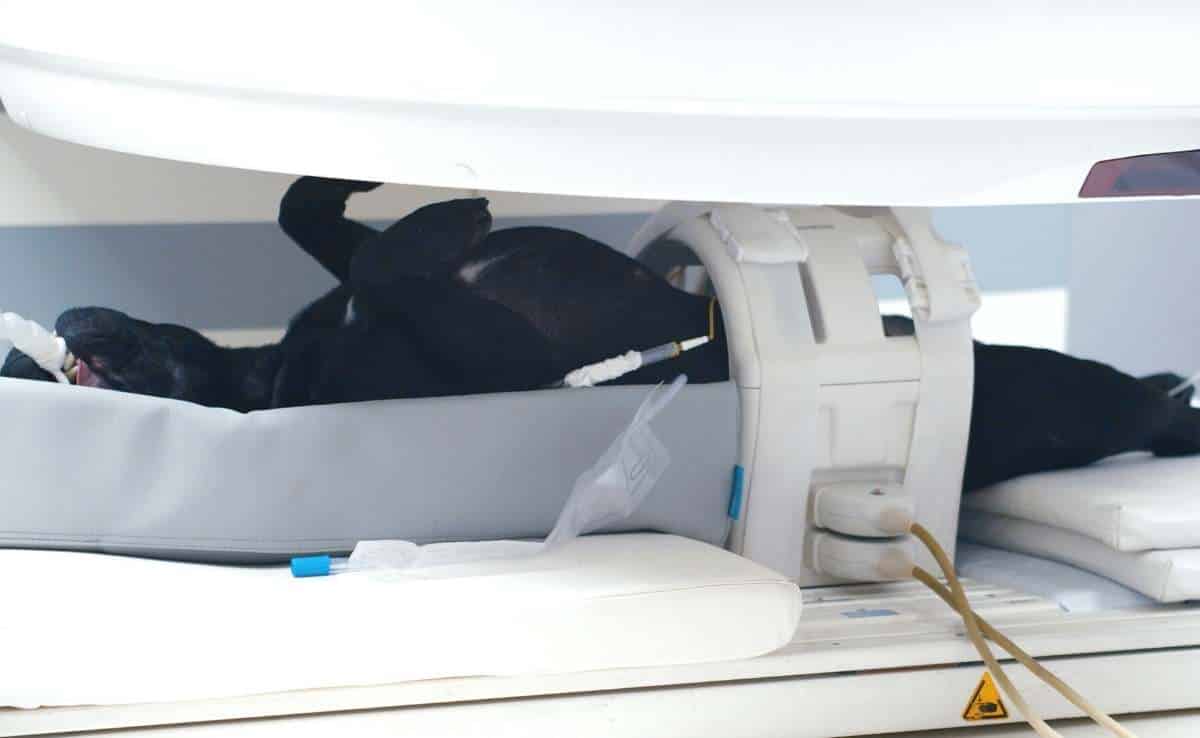
To keep the lights on, we receive affiliate commissions via some of our links. Our review process.

It used to be thought that strokes only occurred in people. However, with advances in veterinary neurology and the increased availability of pet MRI scans, dogs are being diagnosed with strokes more often. While strokes are less common in dogs than in humans, they are equally as serious.
The symptoms of a stroke in dogs can also be very different from what we see in people. Witnessing your canine friend having a stroke is a frightening experience, so it is important to know what to do if you suspect this has occurred. Let’s find out more about the signs of a stroke in dogs, what causes them, and the current treatment options.
What Is A Stroke?
Contents
A stroke occurs when there is a disruption of blood flow to the brain, depriving brain cells of their oxygen supply. This can happen very suddenly and results in either temporary or permanent damage to the brain and nerve tissue. The extent of the damage and its impact on the dog varies depending on the size and part of the brain affected.
Types Of Strokes In Dogs
- Ischaemic stroke is caused by a sudden lack of blood supply to the brain, such as when a vessel becomes blocked or damaged. A blood clot can cause this type of stroke.
- Hemorrhagic stroke is caused by bleeding on the brain when a blood vessel bursts or leaks, resulting in swelling and increased pressure.

True strokes occur in the brain. But, dogs can also suffer from “spinal strokes.” The technical name for this is Fibrocartilaginous Embolism (FCE) which occurs when a piece of an intervertebral disc, the cushion between the spinal vertebrae, breaks off and causes an obstruction to one of the blood vessels in the spinal cord. Depending on the location in the spinal cord, this can result in the dog having problems with coordinating their legs or ability to walk. Depending on the severity, the damage to the spinal cord may be reversible.
What Causes Strokes In Dogs?
Ischaemic stroke can be caused by many different underlying medical conditions in dogs, including:
- High blood pressure
- Kidney disease
- Hormone conditions such as an over-active or underactive thyroid gland, Cushing’s disease, or diabetes
- Heart disease
Haemorrhagic strokes can be caused by bleeding or by diseases that interfere with blood clotting, including:
- Lung worm (angiostrongylosis)
- Rat bait poisoning
- Immune-mediated thrombocytopaenia – A disease that reduces the number of platelets circulating in the blood
- High blood pressure
- Head trauma
- Tumors in the brain
- Inflammation of blood vessels in the brain (vasculitis)
Stroke Symptoms In Dogs
The symptoms of a dog stroke can vary depending on which part of the brain is affected. Often the symptoms come on very rapidly and can progress over several hours. We know that symptoms in dogs can look very different from the symptoms in humans, so what does a dog stroke look like?

Dogs that have experienced a stroke can display any of the following signs:
- Loss of consciousness or collapse
- Walking in circles
- Losing the ability to walk or appearing uncoordinated
- Blindness
- Seizures
- Head tilt
- Falling to one side
- Head pressing – unexplainable pressing of the head against a wall or other object
- Changes to mentation – suddenly becoming unresponsive, reduced alertness, or very dull
Many of these symptoms are not specific to a stroke and can be seen with other brain disorders. Idiopathic Vestibular Syndrome is a common condition in older dogs that can mimic the signs of a stroke. However, this condition is not caused by a problem with the blood supply to the brain but rather a problem with the vestibular apparatus – the delicate structures in the inner ear and brain that help dogs maintain balance and coordinate their movements.
In contrast to strokes, vestibular syndrome rarely causes lasting damage, and most dogs recover spontaneously within a short amount of time. Differentiating between strokes, vestibular disease, and other brain diseases can be challenging. If you suspect your dog has had a stroke, seek emergency veterinary care.
Dog Stroke Or Seizure
A seizure can be a symptom of a stroke. Therefore, it can be difficult to tell the difference between seizures and strokes in dogs. Both events occur in the brain but have different causes.
Seizure
When a dog has a seizure, they may lose consciousness, become stiff and their limbs may jerk or shake. Most seizures last less than two minutes, and dogs then recover relatively quickly.
If your dog has a seizure, whether it is because of a stroke or any other reason, you must seek urgent veterinary advice.
Stroke
A stroke may be associated with other neurological problems, and the symptoms last longer.
Diagnosing Dog Strokes

We now know the answer to the question “Can dogs have strokes?” is yes, but how are they diagnosed? Given that the symptoms of a stroke are very varied, diagnosis can be challenging. Your vet can perform a neurological examination on your pet which involves testing reflexes in their legs, assessing the nerves around the face and eyes, and evaluating your dog’s balance.
Further tests may also be needed to diagnose a stroke such as blood pressure monitoring and blood tests to assess hormone levels, kidney function, and the clotting ability of blood.
A definitive diagnosis of a stroke can only be made by examining images of the brain. A picture of the inside of the brain can be taken using a CT (computed tomography) or MRI (magnetic resonance imaging) scan. These tests require your dog to be anesthetized.
In some cases, a sample of spinal fluid (CSF tap) is also taken to screen for diseases that could cause similar signs to a stroke. If your vet suspects the stroke could be caused by heart disease, they may suggest a heart scan (also called an echo or echocardiogram) or ECG (electrocardiogram) to measure the heart’s rhythm.
Dog Mini Stroke
There is no medical definition of a ‘mini stroke’ in dogs. In people, the term ‘mini stroke’ may be used to describe ‘Transient Ischaemic Attacks’ (TIA), which is a temporary disruption in the blood supply to part of the brain. It is possible that dogs experience similar diseases. However, pet owners often don’t notice signs of a mild stroke in their pets since they include less noticeable indications such as dizziness, reduced vision in one eye, or memory problems. Dog strokes are often only detected when they occur on a larger scale and cause more severe symptoms.
Dog Stroke Treatment
Treatment for dog strokes depends on the underlying cause. For example, if the stroke is caused by high blood pressure, then medication to reduce blood pressure may be prescribed. It could also result from an undiagnosed underlying medical condition such as kidney disease, thyroid disease, or other hormone imbalances.
Diseases that interfere with blood clotting and lead to stroke may require blood transfusions and medication to reduce the swelling in the brain. Your vet, or veterinary neurologist, can suggest the most appropriate treatment for your dog based on the cause of the stroke and the type of stroke they have suffered.
Dog Stroke Treatment At Home
If you suspect your dog has had a stroke, then it is imperative to seek emergency veterinary care. Prompt treatment can help reduce the risk of further strokes.
There are limited treatments you can do at home in the acute phases after a stroke and few pet owners are qualified to perform them as it requires specialist veterinary care.
If your dog has had a stroke diagnosed and has been discharged from the hospital, you may be given physiotherapy exercises to perform at home to aid your dog’s recovery.
Prognosis For Dog Strokes

Your dog’s ability to recover from a stroke depends on several factors. The type of stroke (ischaemic or hemorrhagic), the severity of damage to the brain tissue, and the area of the brain affected all play a part in determining how the stroke affects your dog. The most important factor in determining if your dog can recover from a stroke is what caused it to occur in the first place.
If the underlying cause is treatable, such as high blood pressure, a clotting disorder, or hormone imbalance, it is more likely that they can recover. Some dogs show signs of improvement in just a few weeks, whereas others take a lot longer and may be left with permanent neurological dysfunction. If the stroke occurs in critical areas of the brain that are associated with breathing, regulating heart rate, or controlling blood pressure, then the stroke can be fatal.
Other Neurologic Conditions
It can be worrying to see your canine friend unwell in any way. Strokes are particularly frightening, and the prognosis is often uncertain. Thankfully they are rare in dogs. Other neurological diseases, including seizures or vestibular disease are more common. Learn more about how pet insurance can help you be prepared to cover the costs of diagnostic tests and treatments should you find yourself in this frightening situation.
Tagged With: Neurologic